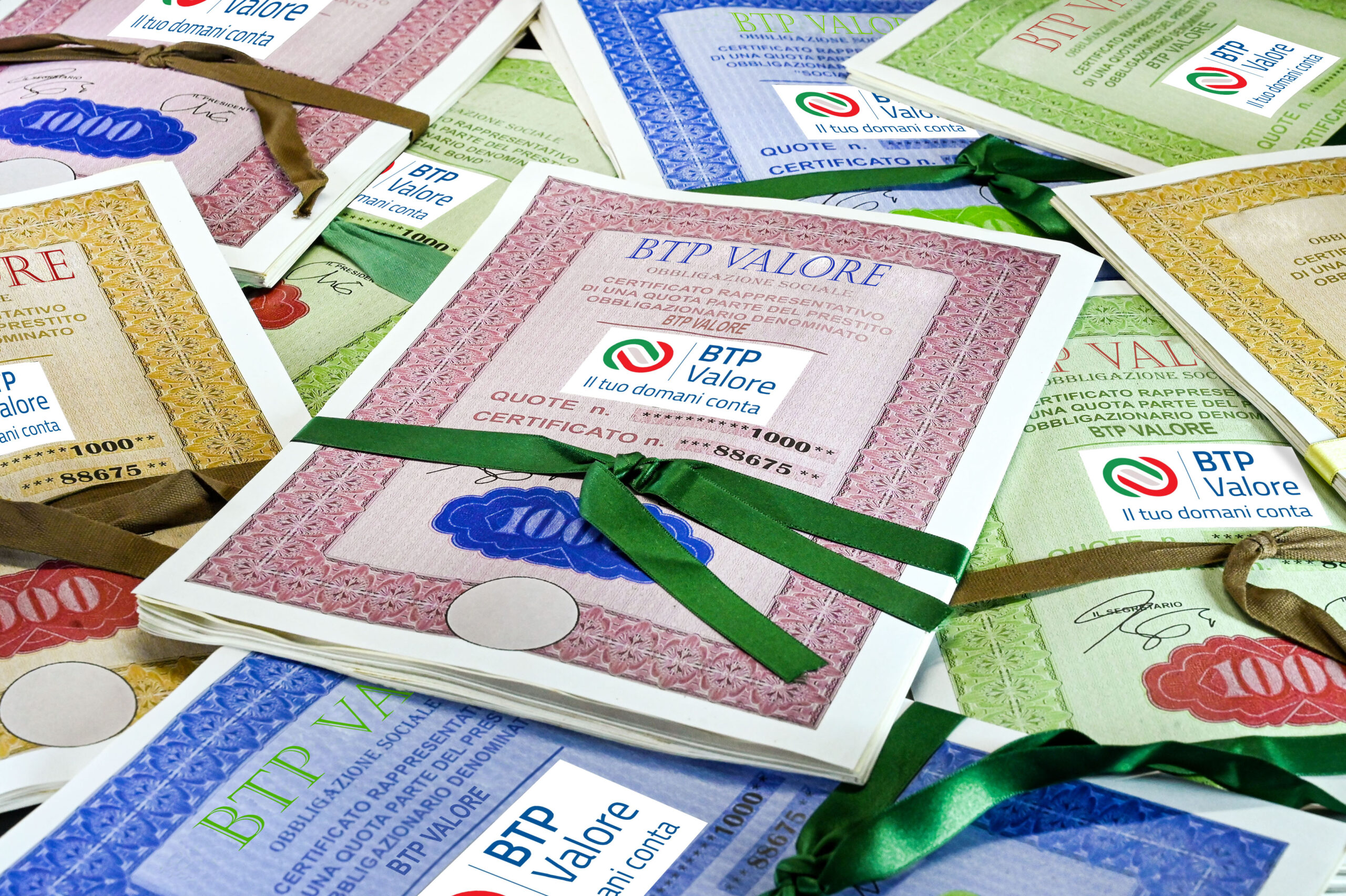How BTPs will change

BTPs are certainly interesting due to the interest rates that are still high today and the prospects of cuts by the ECB. The analysis by Vincenzo Cuscito, Head of Investment Consultants Italy at Moneyfarm
For many managers and analysts, 2023 should have been "the year of bonds", but, despite the positive end to the year, the balance sheet for this asset class is not so clear.
On the government bond front, in the period 1 January 2023 – 14 February 2024, the cumulative return of an ETF on ten-year BTPs, including coupons, was equal to 9.1%, with a volatility of 10%. Over the same period, multi-asset portfolios diversified into bonds and equity, such as Moneyfarm's P3 (70% bond) or P4 (50% bond), respectively generated returns of 8.5%, with a volatility of 4. 8%, and 11.6%, with a volatility of 5.7%.
If the investor had been willing to tolerate the higher level of risk entailed by a multi-asset portfolio with a share of shares, he could therefore have obtained a return comparable to that of a BTP ETF in the short term, with a more contained volatility .
Shifting the focus to the long term, which is the ideal horizon in which to measure the effectiveness of a diversified investment strategy and which allows for greater exposure to stock markets, over the last ten years an investment in ETFs on ten-year BTPs would have generated a return cumulative of 13%, with a volatility of 9.4%, a performance clearly marked by that black year for the markets that was 2022.
Over the same period (2014-2024), Moneyfarm's P3 and P4 portfolios would have generated returns of 36.7%, with a volatility of 5.6%, and 53%, compared to a volatility of 7.2% respectively. .
“Past performances are naturally never indicative of future ones and external macroeconomic factors have an important specific weight, especially in light of the extraordinary monetary policies implemented by central banks in the last decade” – warns Vincenzo Cuscito, Head of Investment Consultants Italy by Moneyfarm – “The data are, however, fundamental to better frame the choice to invest in the BTP, which is not necessarily the right instrument for every need but, like any other financial instrument, must be evaluated based on the risk profile and the time horizon available. It is good to remember that, with the same level of volatility and a time horizon that allows for an increase in risk, there may be more interesting solutions."
If we then consider decidedly riskier financial instruments, with equity shares close to 75%, such as Moneyfarm's P7 portfolio, we will see how these entail a level of volatility similar to that of the ETF on ten-year BTPs (8.1% of P7 versus 10% of the BTP), but with significantly higher cumulative returns (13.7% per year of the P7 versus 9.1% of the BTP).
With an eye to the future
By analyzing expected returns on long-term Italian government bonds, considering forecasts on the path of reference interest rates and other macroeconomic factors, Moneyfarm's Asset Allocation team estimates that over the next ten years BTPs will return an average return of 2 .8% per year, higher than that expected for comparable government bonds issued by other countries, as shown in the graph below.
It remains essential to carefully evaluate with your advisor the level of risk you are willing to tolerate and the correct time horizon, to understand whether there are alternative investment solutions to the BTP, with similar maturities, which can potentially generate more attractive returns. “BTPs are certainly interesting due to the interest rates that are still high today and the prospects of cuts by the ECB, which could have positive impacts on the capital account price in the short term”, explains Vincenzo Cuscito, “however, also balanced portfolios would benefit from these aspects, with the added advantages of other asset classes such as equities”.
The market rewards patient investors
During the last two months of 2023, several investors decided to disinvest well in advance of their long-term investment plan, realizing losses, to reallocate their capital to the Italians' "safe haven", the BTPs being issued.
In BTPs the coupon is certainly interesting and represents a certainty for the investor, but, if we consider the period November-December 2023, an investor who has maintained his diversified and balanced strategy (for example on a Moneyfarm P5 portfolio) has obtained a yield of approximately 6.5%, equivalent to almost three semi-annual coupons of a BTP, assuming an annual coupon of approximately 4%, demonstrating how patient investors who remain faithful to their investment plan are rewarded by the market.
In the period between November 2023 and the end of January 2024, the P5 yield was approximately 8.5%, while in the same period the 1-3 year BTP index recorded a cumulative yield of 2 .2% gross and that of 6-7 year BTPs recorded a cumulative return of approximately 6.3% gross.
In conclusion, there are certainly many cases in which a BTP represents the right choice for an investor. However, as 2022 and 2023 demonstrated, when those who held BTPs had to deal with double-digit capital losses, it is essential to contact a consultant to correctly identify their objectives, their level of risk and the returns sought , so as to understand which tool best meets your needs.
This is a machine translation from Italian language of a post published on Start Magazine at the URL https://www.startmag.it/economia/btp-come-cambieranno/ on Sun, 03 Mar 2024 07:09:18 +0000.
